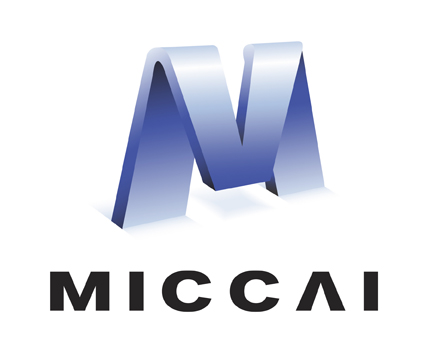Abstract
Colonoscopy is a gold standard procedure but is highly operator-dependent. Automated polyp segmentation, a precancerous precursor, can minimize missed rates and timely treatment of colon cancer at an early stage. Even though there are deep learning methods developed for this task, variability in polyp size can impact model training, thereby limiting it to the size attribute of the majority of samples in the training dataset that may provide sub-optimal results to differently sized polyps. In this work, we exploit size-related and polyp number-related features in the form of text attention during training. We introduce an auxiliary classification task to weight the text-based embedding that allows network to learn additional feature representations that can distinctly adapt to differently sized polyps and can adapt to cases with multiple polyps. Our experimental results demonstrate that these added text embeddings improve the overall performance of the model compared to state-of-the-art segmentation methods. We explore four different datasets and provide insights for size-specific improvements. Our proposed text-guided attention network (TGANet) can generalize well to variable-sized polyps in different datasets. Codes are available at https://github.com/nikhilroxtomar/TGANet.
Access this chapter
Tax calculation will be finalised at checkout
Purchases are for personal use only
Similar content being viewed by others
References
Bernal, J., Sánchez, F.J., Fernández-Esparrach, G., Gil, D., Rodríguez, C., Vilariño, F.: WM-DOVA maps for accurate polyp highlighting in colonoscopy: validation vs. saliency maps from physicians. Comput. Med. Imaging Graph. 43, 99–111 (2015)
Chen, L.C., Zhu, Y., Papandreou, G., Schroff, F., Adam, H.: Encoder-decoder with atrous separable convolution for semantic image segmentation. In: Proceedings of the European Conference on Computer Vision (ECCV), pp. 801–818 (2018)
Fan, D.-P., et al.: PraNet: parallel reverse attention network for polyp segmentation. In: Martel, A.L., et al. (eds.) MICCAI 2020. LNCS, vol. 12266, pp. 263–273. Springer, Cham (2020). https://doi.org/10.1007/978-3-030-59725-2_26
He, K., Zhang, X., Ren, S., Sun, J.: Deep residual learning for image recognition. In: Proceedings of the IEEE Conference on Computer Vision and Pattern Recognition (CVPR), pp. 770–778 (2016)
Heinzerling, B., Strube, M.: BPEmb: tokenization-free pre-trained subword embeddings in 275 languages. In: Proceedings of the International Conference on Language Resources and Evaluation (LREC 2018) (2018)
Huang, C.H., Wu, H.Y., Lin, Y.L.: HarDNet-MSEG a simple encoder-decoder polyp segmentation neural network that achieves over 0.9 mean dice and 86 FPS. arXiv preprint arXiv:2101.07172 (2021)
Jha, D., et al.: Real-time polyp detection, localization and segmentation in colonoscopy using deep learning. IEEE Access 9, 40496–40510 (2021)
Jha, D., et al.: A comprehensive study on colorectal polyp segmentation with ResUNet++, conditional random field and test-time augmentation. IEEE J. Biomed. Health Inform. 25(6), 2029–2040 (2021)
Jha, D., et al.: Kvasir-SEG: a segmented polyp dataset. In: Ro, Y.M., et al. (eds.) MMM 2020. LNCS, vol. 11962, pp. 451–462. Springer, Cham (2020). https://doi.org/10.1007/978-3-030-37734-2_37
Kim, N.H., et al.: Miss rate of colorectal neoplastic polyps and risk factors for missed polyps in consecutive colonoscopies. Intestinal Res. 15(3), 411 (2017)
Lan, P.N., et al.: NeoUNet: towards accurate colon polyp segmentation and neoplasm detection. arXiv preprint arXiv:2107.05023 (2021)
Rex, D.K., et al.: Colonoscopic miss rates of adenomas determined by back-to-back colonoscopies. Gastroenterology 112(1), 24–28 (1997)
Ronneberger, O., Fischer, P., Brox, T.: U-Net: convolutional networks for biomedical image segmentation. In: Navab, N., Hornegger, J., Wells, W.M., Frangi, A.F. (eds.) MICCAI 2015. LNCS, vol. 9351, pp. 234–241. Springer, Cham (2015). https://doi.org/10.1007/978-3-319-24574-4_28
Shen, Y., Jia, X., Meng, M.Q.-H.: HRENet: a hard region enhancement network for polyp segmentation. In: de Bruijne, M., et al. (eds.) MICCAI 2021. LNCS, vol. 12901, pp. 559–568. Springer, Cham (2021). https://doi.org/10.1007/978-3-030-87193-2_53
Srivastava, A., et al.: MSRF-Net: a multi-scale residual fusion network for biomedical image segmentation. IEEE J. Biomed. Imaging Health Inform. 26, 2252–2263 (2021)
Sung, H., et al.: Global cancer statistics 2020: GLOBOCAN estimates of incidence and mortality worldwide for 36 cancers in 185 countries. CA: Cancer J. Clin. 71(3), 209–249 (2021)
Woo, S., Park, J., Lee, J.Y., Kweon, I.S.: CBAM: convolutional block attention module. In: Proceedings of the European Conference on Computer Vision (ECCV), pp. 3–19 (2018)
Zhong, J., Wang, W., Wu, H., Wen, Z., Qin, J.: PolypSeg: an efficient context-aware network for polyp segmentation from colonoscopy videos. In: Martel, A.L., et al. (eds.) MICCAI 2020. LNCS, vol. 12266, pp. 285–294. Springer, Cham (2020). https://doi.org/10.1007/978-3-030-59725-2_28
Acknowledgement
This project is partially supported by the NIH funding: R01-CA246704 and R01-CA240639.
Author information
Authors and Affiliations
Corresponding author
Editor information
Editors and Affiliations
1 Electronic supplementary material
Below is the link to the electronic supplementary material.
Rights and permissions
Copyright information
© 2022 The Author(s), under exclusive license to Springer Nature Switzerland AG
About this paper
Cite this paper
Tomar, N.K., Jha, D., Bagci, U., Ali, S. (2022). TGANet: Text-Guided Attention for Improved Polyp Segmentation. In: Wang, L., Dou, Q., Fletcher, P.T., Speidel, S., Li, S. (eds) Medical Image Computing and Computer Assisted Intervention – MICCAI 2022. MICCAI 2022. Lecture Notes in Computer Science, vol 13433. Springer, Cham. https://doi.org/10.1007/978-3-031-16437-8_15
Download citation
DOI: https://doi.org/10.1007/978-3-031-16437-8_15
Published:
Publisher Name: Springer, Cham
Print ISBN: 978-3-031-16436-1
Online ISBN: 978-3-031-16437-8
eBook Packages: Computer ScienceComputer Science (R0)





